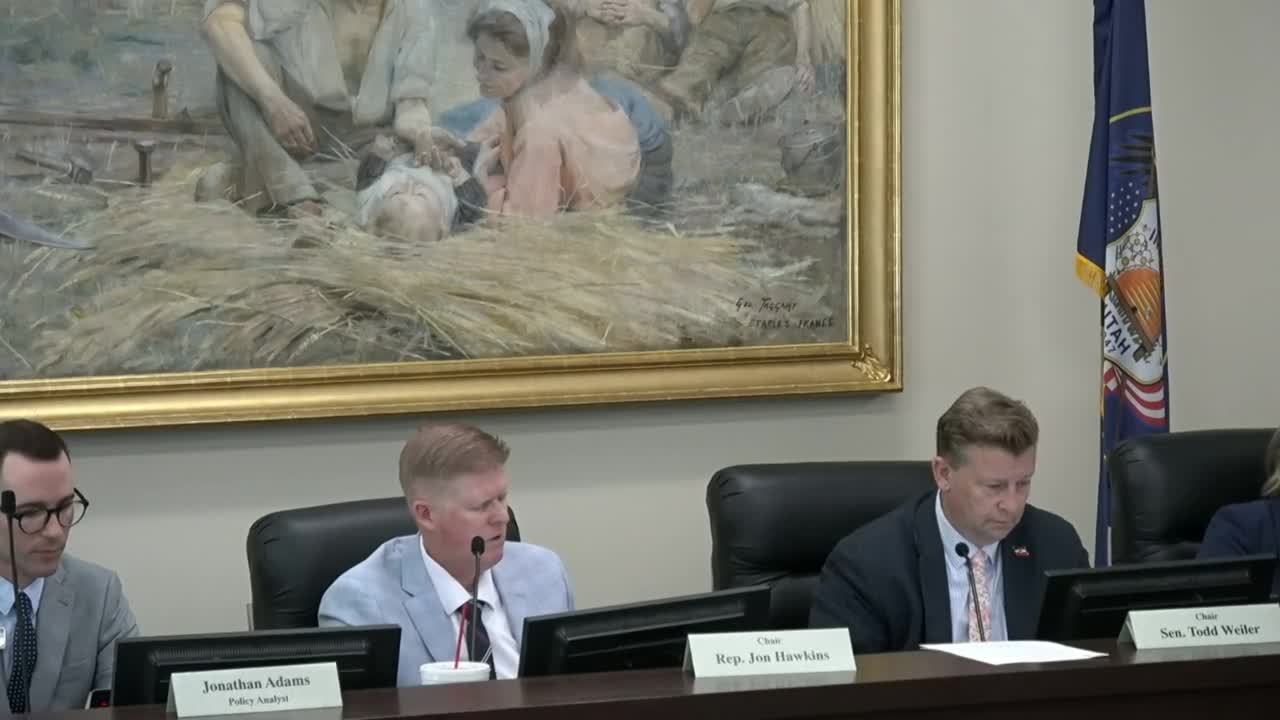Outdated Offender Management System Poses Public Safety Risks
August 21, 2024 | Utah Interim, Utah Legislative Branch, Utah
This article was created by AI summarizing key points discussed. AI makes mistakes, so for full details and context, please refer to the video of the full meeting. Please report any errors so we can fix them. Report an error »

During a recent government meeting, officials from the Department of Corrections presented findings from an audit of the adult probation and parole (AP&P) system, specifically focusing on the outdated offender management software known as OTrac. The audit, conducted in late 2022, revealed significant concerns regarding the system's reliability, efficiency, and overall impact on public safety.
Brian Dean, the legislative deputy auditor general, and August Lehman, the supervisor, highlighted that OTrac, developed in 1990, has not seen a major upgrade since 2009. Agents reported numerous issues, including slow response times, frequent system downtimes, and unreliable data entry, which hinder their ability to manage offenders effectively. One agent described the system's speed as \"like molasses in winter,\" emphasizing the frustration experienced by staff.
The audit also uncovered critical gaps in communication between the AP&P system and the courts, leading to instances where agents mistakenly apprehended offenders who had already been released. This lack of real-time data sharing poses a risk to public safety, as agents rely on accurate information to make informed decisions.
In response to the audit findings, Ryan Day, the newly appointed director of technology innovation, outlined plans for a comprehensive overhaul of the technology used within the department. This includes migrating to a cloud-based system by early 2026 and improving the user interface of OTrac to enhance usability for agents. Day emphasized the importance of integrating technology that supports agents rather than complicating their work.
Scott Stevenson, representing the Board of Pardons, noted that while progress has been made in modernizing their systems, challenges remain with OTrac's legacy structure. He acknowledged the necessity of developing independent systems for the board and the department to ensure efficient operations.
The meeting concluded with a commitment from officials to continue addressing the audit recommendations and improving the technological infrastructure within the corrections system. The ongoing efforts aim to enhance public safety and streamline operations, reflecting a broader trend of modernization within state criminal justice systems.
Brian Dean, the legislative deputy auditor general, and August Lehman, the supervisor, highlighted that OTrac, developed in 1990, has not seen a major upgrade since 2009. Agents reported numerous issues, including slow response times, frequent system downtimes, and unreliable data entry, which hinder their ability to manage offenders effectively. One agent described the system's speed as \"like molasses in winter,\" emphasizing the frustration experienced by staff.
The audit also uncovered critical gaps in communication between the AP&P system and the courts, leading to instances where agents mistakenly apprehended offenders who had already been released. This lack of real-time data sharing poses a risk to public safety, as agents rely on accurate information to make informed decisions.
In response to the audit findings, Ryan Day, the newly appointed director of technology innovation, outlined plans for a comprehensive overhaul of the technology used within the department. This includes migrating to a cloud-based system by early 2026 and improving the user interface of OTrac to enhance usability for agents. Day emphasized the importance of integrating technology that supports agents rather than complicating their work.
Scott Stevenson, representing the Board of Pardons, noted that while progress has been made in modernizing their systems, challenges remain with OTrac's legacy structure. He acknowledged the necessity of developing independent systems for the board and the department to ensure efficient operations.
The meeting concluded with a commitment from officials to continue addressing the audit recommendations and improving the technological infrastructure within the corrections system. The ongoing efforts aim to enhance public safety and streamline operations, reflecting a broader trend of modernization within state criminal justice systems.
View full meeting
This article is based on a recent meeting—watch the full video and explore the complete transcript for deeper insights into the discussion.
View full meeting

